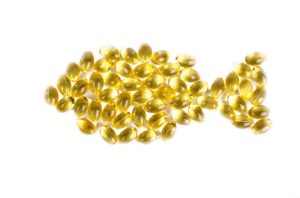Three Essential Omega-3 Fatty Acids
The concept and importance of, essential Omega-3 fatty acids in the human diet are becoming more familiar to all of us, especially those of us in the health education field. Many of us are also aware of essential Omega-6 fatty acids. It turns out that both Omega-3s and 6s are, to some degree, essential to our health, and we require approximately a 1:3 ratio of them (one part omega 3 to three parts of the more common Omega-6). Omega-3 fatty acids (Omega-3s) are anti-inflammatory, improve the immune response, improve cellular membrane health and transportation of nutrients, and decrease blood clotting. Omega-6 fatty acids (Omega-6s) may do the opposite: boost inflammation, reduce cellular membrane transportation and thicken the blood. You will hear far more about Omega-3s and health than Omega-6s. Read on and you’ll see why.Three Omega-3s
**Note: (Yes, there are THREE omega-3s!) The three main Omega-3 fatty acids (in order of importance) are:- DHA (DocosaHexaenoic Acid): Marine source (comes from fish, fish oil, algae, algae oil, and other marine life). DHA is a critical nutrient for a healthy nervous system. It is also an anti-inflammatory and heart- protective compound. Additionally, DHA is also purported to increase beauty, improve immunity in children, and is associated with longevity.
- ALA (Alpha-Linolenic Acid): Terrestrial source (comes from plants). ALA is known primarily as a heart-protective and anti-inflammatory fatty acid.
- EPA (EicosaPentaenoic Acid): Marine source (comes from fish, fish oil, very specific algae and algae oil, as well as other marine life). EPA is an anti-inflammatory and heart-protective compound that may also act as a neurotransmitter, thus improving overall nervous system health.

DHA Molecular Structure.

ALA Molecular Structure

EPA Molecular Structure
Omega-3 vs. Omega-6
The balance of Omega-3 fats to Omega-6 fats in your diet is what determines the overall effect of Omega-3s on your health--good, bad or indifferent. You can look up the actual content of both Omega-3 and its antagonist, Omega-6 for just about every food out there, and it is good to know this ratio for the major foods you eat in your diet. Most of us eat way too much Omega 6 and thus have a low functional amount of Omega-3. Grain-derived foods and bread, for example, tend to be high in Omega-6. The average person in the Western world gets as much as 20 times more Omega-6 than Omega-3 in her/his diet (a 1:20 ratio versus a 1:3 recommended ratio). It is actually difficult to avoid Omega 6s, so in most cases it is easiest to eat or supplement with more Omega-3s to get the ratio back to 1:3 (1 part Omega-3 to 3 parts Omega-6).





